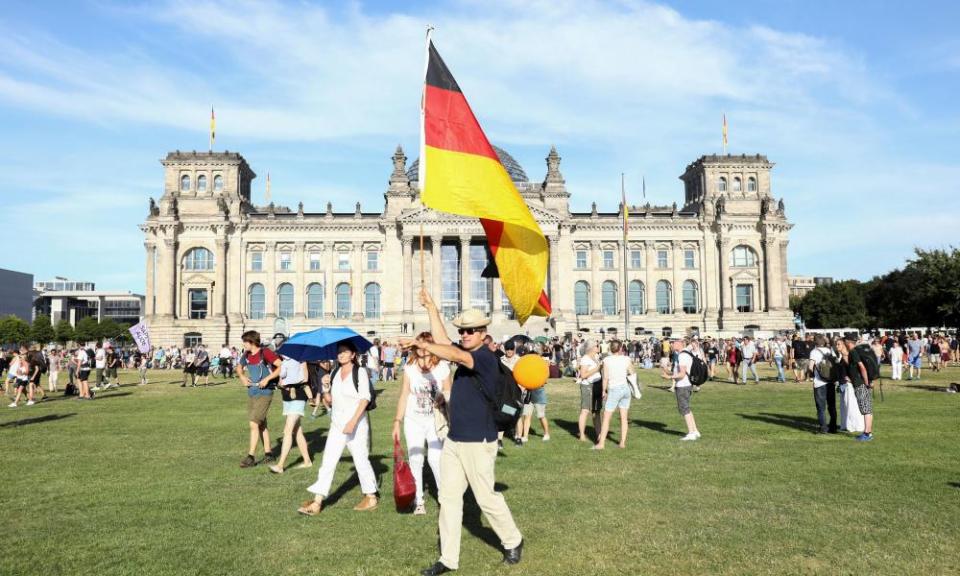Kurzarbeit: Germany's scheme for avoiding unemployment

Referred to by some economists as one of Germany’s most successful exports, Kurzarbeit, the short-time work benefit, is a scheme which came into its own during the global financial crisis of 2008-9 when it brought stability to the country’s labour market. Germany was the only G7 economy to avoid a rise in joblessness in 2009 and Kurzarbeit receives much of the credit for that achievement.
Related: Germany's recession fills classes
But the policy’s history goes back much further, to approximately 1910, when it was first introduced as a way of tackling a capacity cutback in the potassium salt industry. Affected workers received a Kurzarbeiterfürsorge, or “short-time work welfare”, payment from the German empire.
It has subsequently been most typically used to help overcome short term problems such as flood damage or bad weather impacting the construction industry.
Reaction in Berlin to the fact that the British government has turned to the German model to save its economy during the pandemic was muted today, not least because Kurzarbeit has already been adopted by numerous countries across the world. When Rishi Sunak introduced the furlough scheme in March it was already viewed in Germany as a system modelled on Kurzarbeit.
Related: Germany’s furlough scheme saves firms from freefall
The question asked back then was only when Britain would recognise its model was too inflexible and short-term to be properly effective, and instigate a longer-term scheme, as Germany has done.
Kurzarbeit has been imitated in various forms, firstly by Switzerland, and more recently by other countries including Denmark, Sweden, Norway, Austria, Czech Republic, Italy and Japan.
The French variant is the chômage partiel – partial unemployment scheme – where laid off workers receive state payments. In Spain it’s the ERTE system, whereby workers who have been temporarily suspended are paid 70% of their wages as social security.
How it works:
Effectively a social insurance programme, and an alternative to redundancy, under Kurzarbeit, employers reduce their employees’ working hours instead of laying them off. A large portion of the workers’ lost income is picked up by the state.
So for the hours not worked, an employee initially receives 60% of their wage, (67% for parents) and is fully paid for the actual hours worked. For a 30% reduction in working time, the loss in salary terms is only 10%.
Adjusted to deal with the prolonged nature of the pandemic, during the fourth month the rate increases to 70%, and to 80% from the seventh month.
The criticisms levelled at the scheme include that it reduces labour market flexibility and that it effectively creates ‘zombie firms’.
On the positive side, it enables a company to retain the human capital that it has often paid to train, which makes it particularly suited to Germany which has a high level of vocational training. It also saves a company from having to go through the costly and time-consuming process of re-hiring and training anew.
The employer is required to pay 80% of the total social security contributions owed, ensuring that the system cannot be abused by employers looking to reduce costs.
Tweaked considerably to deal with the current crisis, the current German Kurzarbeit rules which have applied since 1 March, and are expected to last for two years after the scheme was extended, require an employer to first submit his company’s individual plans to his local employment office for approval.
Temporary workers – around 2% of the workforce – were also eventually covered by the current scheme after it was instigated. But many marginal workers or so-called “mini-jobbers” as well as many self-employed who don’t pay social security contributions are not covered, which critics of the scheme say is one of its downsides.
Another tweak was that in order to be eligible for Kurzarbeit, initially employers needed to reduce working hours for at least 30% of their workforce. Now that has been reduced to just 10%, to make it a more flexible and therefore attractive proposal.
Whilst the global financial crisis impacted the manufacturing sector considerably, due to the collapse of import demands, the pandemic’s impact will be much wider, due to the forced temporary closure of a much broader range of businesses, so it is expected that Kurzarbeit will have to be supplemented by other means of state support.

 Yahoo News
Yahoo News 